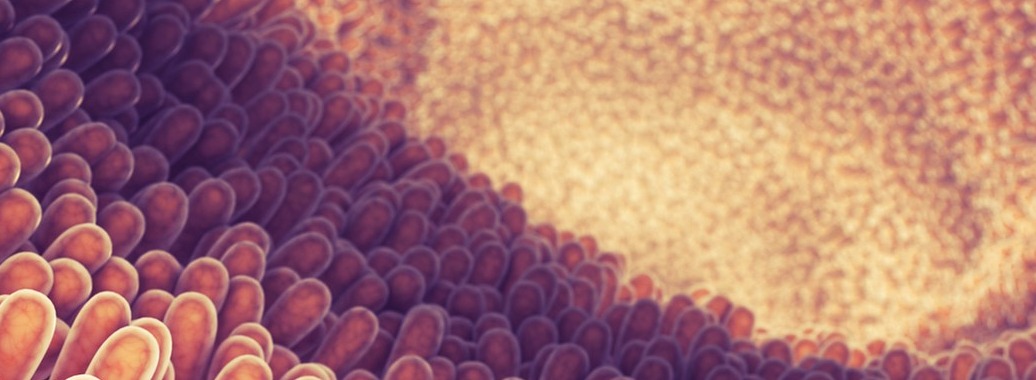6.5 The small intestine
The small intestine is about the same thickness as a human finger. It is about four meters long. Its walls resemble a vacuum hose turned inside out, as its inner walls are corrugated. The folds have tiny villi, each of which contains both blood vessels and lymphatic vessels.
Spread open, the small intestine area would cover a tennis court. All sections of the small intestine retrieve digested parts of food, so that all the useful substances you eat are absorbed into the body.
 Villi of the small intestine.
Villi of the small intestine.
The chyme (partly digested food) is transferred from the stomach to the duodenum, the beginning of the small intestine, in small portions. There, bile and pancreatic enzymes are excreted and mixed with the chyme. In addition, the small intestine secretes nutrient-degrading intestinal fluid.
All nutrients are digested in the small intestine. Carbohydrates are broken down by pancreatic amylase into small carbohydrates or sugars.
Pancreatic enzymes break proteins into amino acids. Fats are digested into fatty acids and glycerol with the help of bile produced by the liver and the intestinal fluid secreted by pancreas.
Amino acids and sugars are transported to the liver and therein into the bloodstream through the capillary veins ofthe villi. Fat degradation products are absorbed into the lymphatic system. The final stage of digestion in the small intestine takes from one to four hours. The undigested material is transported to the large intestine.
